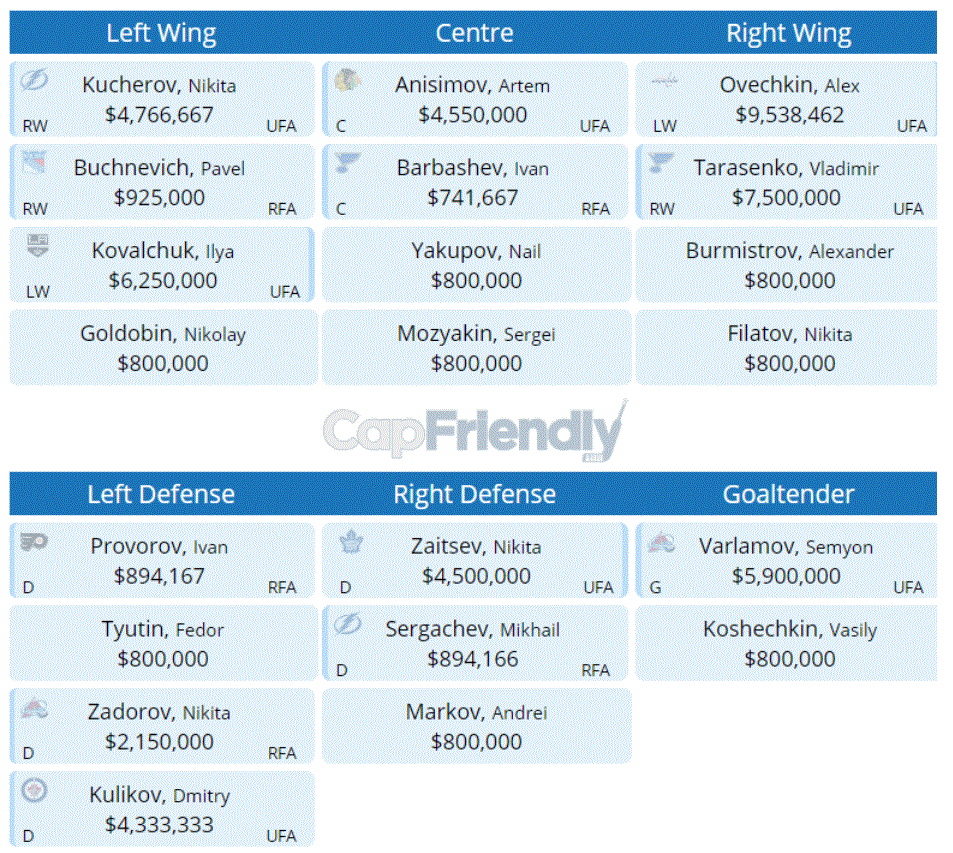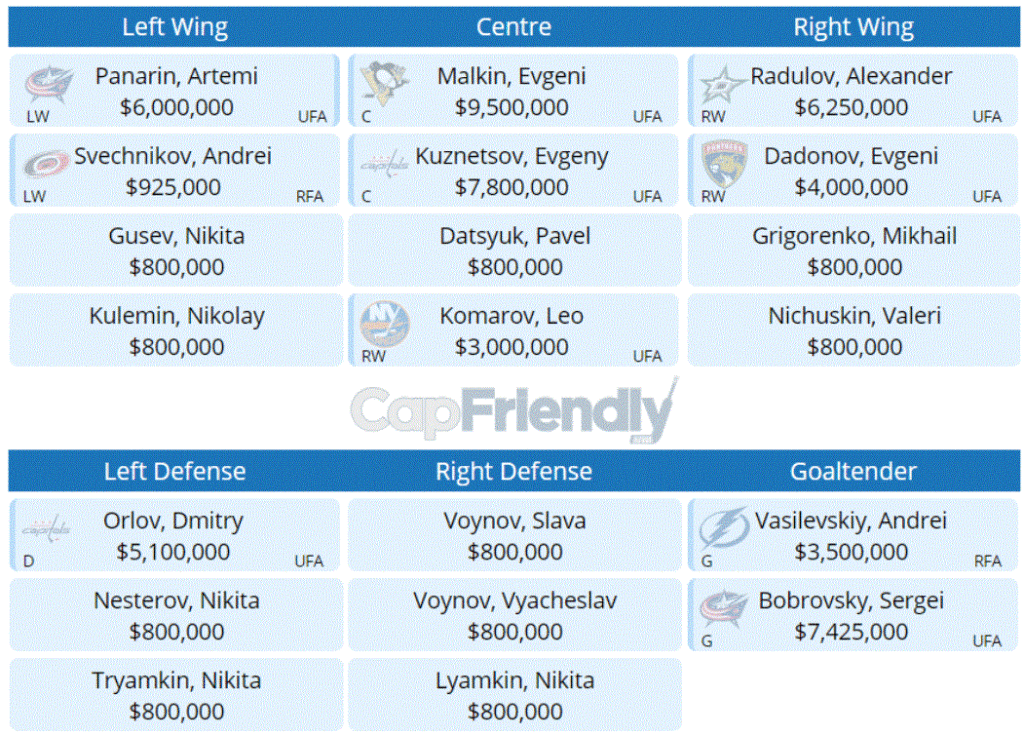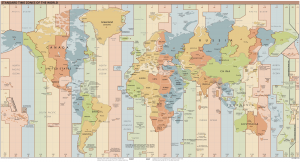*If you already read Parts I, II, III, IV, V and VI of this article, skip down to where it says “UTCs +3 and +4.”
Sports are generally fun. Reality is generally not as fun. Sports in the context of reality are fluctuating levels of fun and not as fun. Since I do not consider myself a masochist, I try to write fun stuff. And you know what’s fun? Making teams that are unlikely to exist, that are selected based on handpicked, whimsical parameters, and pitting them against each other.
After the wonderful writers at The Athletic went to the painstaking measures of projecting teams for Canada, the United States, Sweden, Russia, and Finland at the 2020 World Cup of Hockey, it was announced days later that the World Cup of Hockey is, at present, not happening. The 2014 Olympics feel like a decade ago, and meaningful international hockey does not look to be on the cards anytime soon. One cool concept introduced at the more relaxed 2016 World Cup was Team North America. Made up of the best 23-and-under players from the US and Canada, stars like Connor McDavid and Johnny Gaudreau joined forces to offer fans a glimpse into the NHL’s bright future. And with pieces being written recently by Sean McIndoe that aimed to field the best and worst teams possible using existing contracts, I started thinking. Thus, the Great Ice Hockey Time Zones World Cup was created.
National borders are so arbitrary, and yet we stage the biggest sporting events in the world (among other things) based on them. International hockey tournaments with NHL talent have always been played on tilted ice, with Canada winning three of the five Olympics in which players from the senior circuit have partaken. The US has closed the gap on Canada recently, but with Russia still developing talent using Soviet-era training methods and Finland, Sweden and others not quite having the depth to match the North American nations due to their smaller populations, it doesn’t seem that parity is nearby. It would be more intriguing to play a tournament with the people that celebrate New Years’ simultaneously with you. That’s right—forget national allegiances. On hockey’s biggest stage (soon—trust me), the sport’s foremost superstars will be suiting up for teams like “Coordinated Universal Time (acronym UTC—no idea how) negative six.” If you weren’t always friendly with middle school geography, here’s a map of the time zones.
The appeal is simple—we’re trying to break up the Canadian juggernaut by taking advantage of how much sheer landmass the True North spans, but we’re giving them the American studs directly south to add star power. Fortunately for us, the time zones in Canada are actually pretty nicely split down the borders of the provinces, so that sense of hometown pride will burn extra strong. I thought that we would run into an issue with the Scandinavians. Fear not, though—Sweden and Finland are actually in different time zones as well! The Finns do get the short end of the stick in that Sweden is aided by nations such as the Czech Republic in UTC +1, while Russia has no players of note until UTC +3, leaving our small but mighty nation of some five million stuck in the middle in UTC +2.
A conditional: it may have gleefully occurred to you, “Oh boy, Russia is SCREWED!” The world’s largest nation by landmass has already been struggling to churn out top young talent relative to previous levels for a few years now, and it spans eleven f*cking time zones! To level the playing field, I split Russia in two—Russia West will be the players hailing from UTCs +3 and +4 near Europe, while Russia East will be comprised of the legends in UTC +5 and east—from basically Siberia to holy-shit-that’s-actually-still-Siberia.
Finally, tragically, it is with much grief that I share with you that neither Sidney Crosby nor Nathan MacKinnon—probably two of the best five players in the world—will be part of this exercise. Both grew up in the province of Nova Scotia in Canada (population 950,000, UTC -3). There have only been a few dozen NHL players from Nova Scotia in history, and there are less than ten active players. Plus, if I added UTC -3 players to the UTC -4 team, well, this really wouldn’t be a contest at all. Other than that, however, one of the attractive features of the GIHTZWC is that every top player in the world besides Crosby and MacKinnon are on a squad. Players that generally wouldn’t get a chance to really compete for a medal, like Frederik Andersen of Denmark and Leon Draisaitl of Germany, will be surrounded with the types of teammates that will have them playing every match-up tight.
Global time zone supremacy is on the line. As a resident of UTC -4 (Eastern Standard Time) my whole life, I’m finally ready to lord over the hockey universe, with a little help from McDavid and John Tavares. Let’s break down the teams—lineups, strengths, weaknesses, and more—and find out where the best distance to live from the Prime Meridian is once and for all!
UTCs +3 and +4 (West Russia)

Look, Russia is too damn wide to give them just one team—it would almost compromise the integrity of the tournament—but this is even worse than I expected. It’s been generally accepted for a little while now that, while some stars will continue to come from Russia, they’re not producing top-end talent at the rate they used to, and most players not guaranteed $20-million-plus contracts in the NHL are understandably going to continue playing in the familiar confines of the Kontinental Hockey League. There have been a number of testimonials from North American players who have made the trek to Mother Russia about the extreme training tactics and stone-age managerial philosophies employed over there, so don’t expect these trends to reverse course anytime soon either.
To state the obvious, Ovechkin, Kucherov, and Tarasenko are going to get theirs for Russia West. Beyond them in the forwards, however, it’s extremely slim pickings. Buchnevich has potential but isn’t setting the world on fire for the Rangers, while the Ilya Kovalchuk experiment hasn’t paid off yet for the floundering Los Angeles Kings. And that’s not even touching on the centers—any team here that has to rely on Artem Anisimov and Ivan Barbashev in their top-six is in a dark, dark place. A couple of familiar NHL faces in Yakupov and Burmistrov round out the top nine, while I reached into the KHL to fill out the forwards. In other words—not good.
The D is actually much stronger. Provorov is on the cusp of being an undoubted #1 D-man in the league at 22 years old, while Sergachev took the playoffs by storm last season for the Tampa Bay Lightning at just 19. Maple Leafs Public Enemy #2 Nikita Zaitsev (after Jake Gardiner, of course) will have to play big minutes, but former NHLers Fedor Tyutin and Andrei Markov can still be capable playing limited minutes despite their ages. Semyon Varlamov is a disconcerting, at best, option in net, but I wasn’t going to give the nod to Metallurg Magnitogorsk tendie Vasily Koscheckin.
This team will not medal despite being able to draw from two time zones. It’s a shame for Ovechkin and Kucherov, probably two of the ten best players in the world, but every second they’re not on the ice Russia West will be at a clear disadvantage.
UTC +5 (East Russia)

If Russia West had respectable defensemen but poor forwards and goaltending, Russia East is just about their polar opposite. Turns out much of Russia’s talent up front over the years has come from the massive chunk of the country above Asia, while the Eastern team can count themselves lucky they have two elite goaltenders. Russia West, on the other hand, is stuck with Varlamov.
Where Russia East really differentiates themselves from Russia West is down the middle—Malkin, Kuznetsov, and Datsyuk are an enviable 1C, 2C, and 3C. Panarin and Radulov are having great years in the NHL, while I decided to see what 2018 second overall pick Andrei Svechnikov could do with a great centerman by sliding him on Kuzy’s left. Reigning KHL scoring title king Nikita Gusev will supplement Datsyuk, while former or current NHL faces slot in at all four other forward spots. I had to give Sabres bust Mikhail Grigorenko the nod on the third line because he is from Khabarovsk—which is basically China, which is awesome.
The D is totally sketchy. I’ve always been a fan of Dmitry Orlov and it’s generally agreed Slava Voynov would be a top-four (maybe top-two) defenseman in the NHL today if he didn’t beat his wife. The bottom four are all relatively unknown KHL quantities save Nesterov, who played parts of a few NHL seasons. The D-men save face because there are actually two Vyacheslav Voynovs here—“Slava” is just a nickname of the first-pairing player. I got so exhausted trying to peruse KHL All-Star teams for right-handed shots from UTC +5 that I just decided to put two hulking young lefties named Nikita together on the third pairing, which you’re going to have to accept. Everyone knows how good Vasilevsky and Bobrovsky are, but there’s probably too much on their plates given the D-men in front of them. Because Central Asia is just so wild, I can’t decide if Bobrovsky is from basically Kazakhstan or basically Mongolia. Great stuff. Seriously, what do you know about Kazakhstan or Mongolia? Besides the Genghis Khan stuff a millennium ago.
This team is in a similarly tough spot as Russia West. There are too many teams that have good-to-great forwards, D, and goaltending to overlook this squad’s back end, even if they have plenty of talent elsewhere. There’s a lot to like in the forwards, especially the top-tier talents, and Vasilevskiy or Bobrovsky could easily keep this team in games. But I’m not putting any money here with the iconic Nikita Tryamkin-Nikita Lyamkin pairing taking up two of six spots on the ice for fifteen minutes a night.
So who’s winning this thing?
Hell if I know. That’s for you to decide for yourself. What’s pretty clear is that we have three tiers of squads. At the top there’s the UTC -4s, drawing from Ontario, Quebec, and the Eastern US, and the UTC +1s, made up of Swedes and their hockey-playing Central European neighbors. The next tier might be led by the West Coast UTC -7s and their Rocky Mountain neighbors the UTC -6s, followed by the All-Finn UTC +2s and the central North American UTC -5s, with the latter two teams getting knocked down a hair because of their depth, especially in defense, and their goaltending situation, respectively. Russia West, the UTC +3/+4s, and Russia East, the UTC +5-+11s, bring up the rear because of their depth issues and reliance on KHL bodies, but will still not be without plenty of intrigue. The good news to keep in mind is that there is so much talent here crammed onto so few teams that we the fans are bound to be treated to some breathtaking skill and ability in every game of this thing.
And that wraps it up! I hope you had as much fun on this part geography-refresher, part quest-for-longitudinal-domination as I did.



